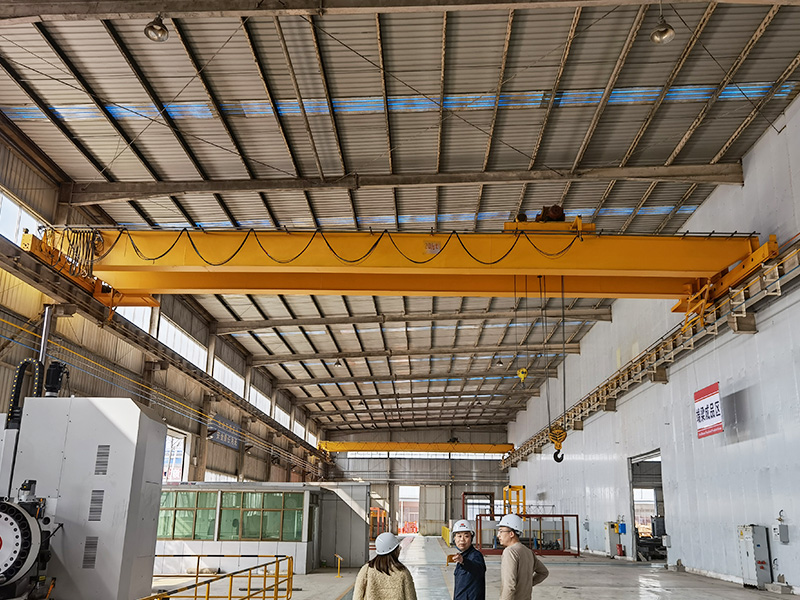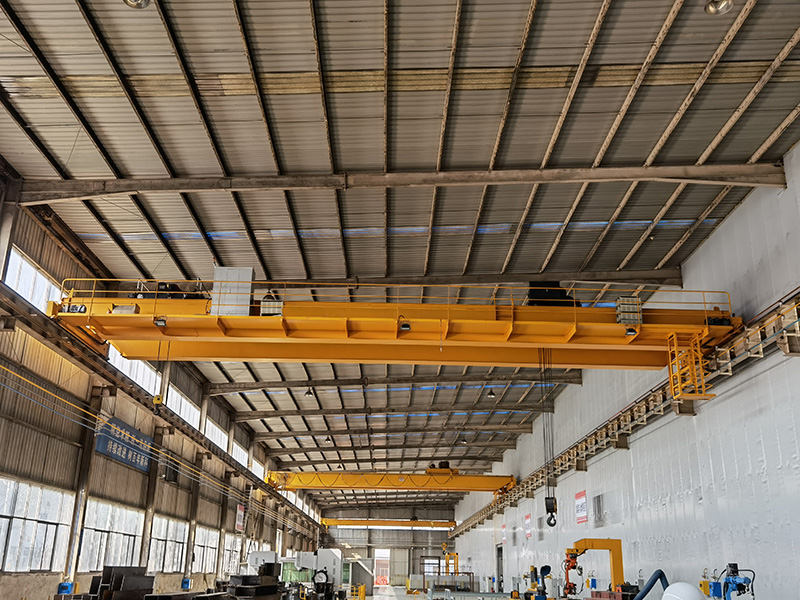Installing a double girder overhead crane 20 ton is a complex and meticulous process that requires careful planning, precise execution, and adherence to safety standards. This type of crane is widely used in various industrial settings for heavy lifting and material handling. Proper installation is crucial to ensure the crane operates efficiently and safely. Here is a comprehensive guide on how to install a double girder overhead crane 20 ton.

Planning and Preparation
Site Assessment:
Before beginning the installation, conduct a thorough site assessment of the overhead crane to ensure the area is suitable for the crane. This includes checking the structural integrity of the building, the availability of space, and the layout of the workspace.
Ensure that the installation site is free from obstacles and has adequate clearance for the crane’s operation.
Foundation and Support Structure:
Verify that the building’s foundation and support structure can bear the weight of the crane and its maximum load capacity.
If necessary, reinforce the foundation or install additional supports to ensure stability and safety.
Permits and Regulations:
Obtain all necessary permits and ensure compliance with local regulations and safety standards.
Coordinate with relevant authorities to avoid any legal issues during the installation process.
Equipment and Tools:
Gather all necessary equipment and tools for the installation, including lifting devices, welding machines, bolts, and safety gear.
Ensure that all tools and equipment are in good working condition and meet safety standards.
Installation Process
Assemble the Crane Components:
Begin by assembling the crane components on the ground. This includes the end trucks, girders, hoist, and trolley.
Follow the manufacturer’s instructions carefully to ensure proper assembly.
Install the End Trucks:
Lift and install the end trucks onto the runway beams. The end trucks are crucial as they support the girders and allow the crane to move along the runway.
Ensure that the end trucks are properly aligned and securely fastened to the runway beams.
Position the Girders:
With the help of lifting equipment, position the double girders onto the end trucks. The girders should be placed parallel to each other and aligned accurately.
Secure the girders to the end trucks using bolts and ensure they are tightly fastened.
Install the Hoist and Trolley:
Once the girders are in place, install the hoist and trolley system. The hoist is responsible for lifting the load, while the trolley moves the hoist along the length of the girders.
Ensure the hoist and trolley are securely attached and properly aligned with the girders.
Electrical Connections:
Connect the electrical systems for the crane. This includes wiring the hoist, trolley, and control systems.
Ensure that all electrical connections are made according to the specifications of manufacturer and local electrical codes.
Test Run:
Conduct a test run of the crane to ensure that all components are functioning correctly. This includes checking the movement of the crane along the runway, the operation of the hoist and trolley, and the response of the control systems.
Make any necessary adjustments to ensure smooth and efficient operation.

Safety Considerations
Safety Gear:
Ensure that all personnel involved in the installation are wearing appropriate safety gear, including hard hats, safety glasses, gloves, and steel-toed boots.
Provide fall protection equipment for workers operating at heights.
Load Testing:
Conduct a load test to verify the crane’s lifting capacity and ensure it can safely handle the maximum load of 20 tons.
Gradually increase the load during testing to identify any potential issues or weaknesses.
Training:
Provide training for all operators and maintenance personnel on the proper use and maintenance of the double girder overhead crane 20 ton.
Ensure that operators are familiar with safety protocols and emergency procedures.
Regular Inspections:
Implement a schedule for regular inspections and maintenance to ensure the crane remains in good working condition.
Address any issues promptly to prevent accidents and equipment failure.
Final Checklist
Alignment and Leveling:
Double-check the alignment and leveling of the girders and end trucks. Misalignment can lead to operational issues and increased wear and tear.
Bolt Tightness:
Verify that all bolts and fasteners are securely tightened. Loose bolts can compromise the stability and safety of the crane.
Lubrication:
Ensure that all moving parts are adequately lubricated to reduce friction and prevent wear.
Control Systems:
Test the control systems thoroughly to ensure they are responsive and operate correctly.
Emergency Stops:
Verify that emergency stop mechanisms are functional and accessible.
Installing a double girder overhead crane 20 ton is a task that demands precision, expertise, and strict adherence to safety standards. By following the steps outlined above, you can ensure a successful installation that maximizes the crane’s efficiency and safety. Proper planning, careful execution, and ongoing maintenance are key to ensuring that the crane operates smoothly and meets the needs of your industrial operations. Remember, safety should always be the top priority throughout the installation process.